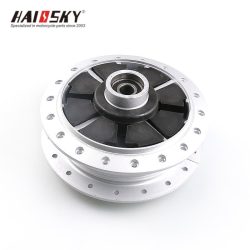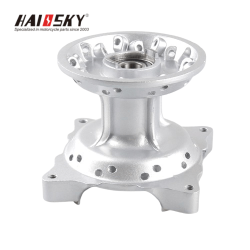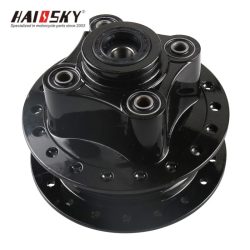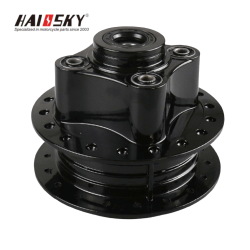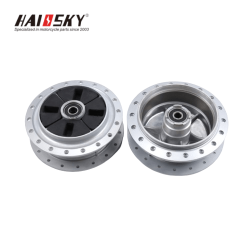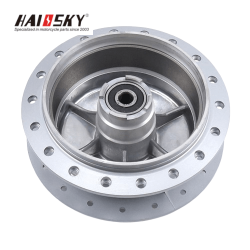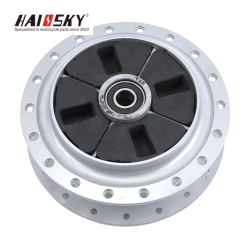OEM Motorcycle Parts
Category: Motorcycle Brake Hubs
The Ultimate Guide to Motorcycle Brake Hubs: Everything You Need to Know
When it comes to motorcycle safety, the braking system is one of the most critical components. The motorcycle brake hub plays a vital role in ensuring your bike can stop effectively and safely, whether you’re navigating city streets or cruising on the highway. For B2B wholesalers and motorcycle enthusiasts, understanding the purpose, types, and maintenance of brake hubs is essential. In this guide, we’ll dive deep into everything you need to know about motorcycle brake hubs, while optimizing for the keyword “motorcycle brake hub” to help you make informed decisions for your business or customers.
What is a Motorcycle Brake Hub?
A motorcycle brake hub is the central component of the wheel that houses the braking mechanism. In drum brake systems, the hub contains the brake drum, which rotates with the wheel. When the rider applies the brakes, brake shoes inside the drum press against its inner surface, creating friction that slows down or stops the wheel. In disc brake systems, the hub connects the wheel to the axle and supports the brake rotor. The brake hub is crucial for both wheel attachment and braking performance.
Did Motorcycles Ever Have Drum Brakes?
Yes, drum brakes were once the standard braking system for motorcycles. They were widely used in older models and are still found on some entry-level and vintage motorcycles today. Drum brakes are known for their simplicity, durability, and low maintenance, making them a popular choice for commuter and off-road bikes. However, they have largely been replaced by disc brakes in modern motorcycles due to the latter’s superior stopping power and heat dissipation.
What Are Hub Brakes on a Bike?
Hub brakes, also known as drum brakes, are a type of braking system where the braking mechanism is housed within the wheel hub. When the rider applies the brakes, brake shoes inside the hub press against the drum, creating friction that slows down or stops the wheel. Hub brakes are commonly used on bicycles, scooters, and some motorcycles, particularly in rear-wheel applications.
What is the Motorcycle Braking Rule?
The motorcycle braking rule emphasizes the importance of using both the front and rear brakes together for optimal stopping power. The front brake provides up to 70% of the stopping force, while the rear brake contributes the remaining 30%. Riders should apply both brakes smoothly and progressively to avoid skidding or losing control.
How Do Motorcycle Drum Brakes Work?
Motorcycle drum brakes work by using brake shoes that press against the inner surface of a rotating drum. When the rider applies the brakes, a cam or lever mechanism forces the brake shoes outward, creating friction against the drum. This friction slows down or stops the wheel. Drum brakes are simple, reliable, and effective, especially in wet or muddy conditions where disc brakes might struggle.
Which is Better, Disc or Drum Brakes in Motorcycles?
Both disc and drum brakes have their advantages and disadvantages:
Disc Brakes
Pros: Superior stopping power, better heat dissipation, consistent performance in all conditions, easier to maintain.
Cons: More expensive, prone to rotor warping under extreme heat.
Drum Brakes
Pros: Simple design, low maintenance, effective in wet or muddy conditions, cost-effective.
Cons: Less stopping power, prone to overheating under heavy use, harder to service.
For most modern motorcycles, disc brakes are the preferred choice due to their superior performance. However, drum brakes remain a reliable option for certain applications, such as entry-level bikes or off-road motorcycles.
What Year Did Harley Go to ABS Brakes?
Harley-Davidson introduced Anti-Lock Braking System (ABS) as an option on select models in 2008. By 2014, ABS became standard on all Harley-Davidson touring models, reflecting the brand’s commitment to rider safety and advanced braking technology.
Types of Motorcycle Brake Hubs
Motorcycle brake hubs come in different types, each designed for specific braking systems and performance needs. Here’s a breakdown of the most common types:
1. Drum Brake Hubs
Drum brake hubs house the brake drum and shoes. They are commonly used in rear-wheel applications on entry-level and vintage motorcycles. Drum brake hubs are known for their simplicity and durability but offer less stopping power compared to disc brakes.
2. Disc Brake Hubs
Disc brake hubs support the brake rotor and are used in conjunction with disc brake systems. They are the standard for modern motorcycles, offering superior stopping power and heat dissipation. Disc brake hubs are more complex and expensive but provide better performance in all riding conditions.
3. Single-Sided Rear Hubs
Single-sided rear hubs allow the wheel to be mounted on one side, making tire changes easier and improving aerodynamics. They are commonly used in high-performance and racing motorcycles.
4. Double-Sided Rear Hubs
Double-sided rear hubs are the most common type, providing better wheel alignment and durability. They are suitable for touring, commuting, and off-road motorcycles.
Maintenance Tips for Motorcycle Brake Hubs
To ensure your brake hubs last as long as possible, follow these maintenance tips:
Regular Cleaning: Clean the brake hub and components regularly to remove dirt, dust, and debris.
Inspect for Wear: Check the brake shoes, drum, or rotor for signs of wear, cracks, or damage.
Replace Worn Parts: Replace brake shoes or pads when they reach the manufacturer’s recommended wear limit.
Lubricate Moving Parts: Apply high-temperature grease to bearings and pivot points to ensure smooth operation.
Check Alignment: Ensure the wheel and brake components are properly aligned to prevent uneven wear.
Test Brake Performance: Regularly test the brakes to ensure they are responsive and provide adequate stopping power.
How to Choose the Right Motorcycle Brake Hub
When selecting a brake hub for your inventory or customers, consider the following factors:
Compatibility: Ensure the hub matches the motorcycle’s make, model, and braking system.
Material: Choose high-quality materials like cast iron or steel for durability and performance.
Performance Needs: Select hubs that meet the rider’s performance requirements, whether for commuting, touring, or racing.
Brand Reputation: Opt for reputable brands known for producing reliable and high-performance brake components.
Ease of Installation: Choose hubs that are easy to install and come with all necessary hardware.
Warranty and Support: Look for hubs backed by a warranty and manufacturer support for added peace of mind.
How to DIY and Replace a Motorcycle Brake Hub
Replacing a brake hub is a straightforward process. Here’s a step-by-step guide:
Tools Needed:
Socket wrench
Torque wrench
Brake cleaner
Allen keys or hex wrench
Steps:
Prepare the Motorcycle: Secure the bike on a stable surface using a paddock stand or center stand.
Remove the Wheel: Loosen the axle nut and remove the wheel to access the brake hub.
Remove Old Brake Hub: Unscrew the bolts holding the brake hub and remove the old hub.
Install New Brake Hub: Attach the new hub and secure it with bolts. Use a torque wrench to tighten the bolts to the manufacturer’s specifications.
Reassemble the Wheel: Reattach the wheel and tighten the axle nut.
Test the Brakes: Pump the brake lever a few times to ensure proper alignment and functionality.
FAQs About Motorcycle Brake Hubs
Q: Can I upgrade from drum brakes to disc brakes?
A: Yes, but it requires significant modifications to the wheel, hub, and braking system. Consult a professional mechanic for this upgrade.
Q: How often should I inspect my brake hub?
A: Inspect the brake hub every 5,000 to 10,000 kilometers or during routine maintenance.
Q: What’s the difference between single-sided and double-sided rear hubs?
A: Single-sided hubs allow for easier tire changes and improved aerodynamics, while double-sided hubs offer better alignment and durability.
Final Thoughts
The motorcycle brake hub is a vital component that ensures your bike stops safely and effectively. By understanding its purpose, types, and maintenance requirements, you can keep your customers’ motorcycles performing at their best. At Haissky.com, we offer a wide range of high-quality brake hubs to meet the needs of B2B wholesalers and riders alike. Explore our catalog today and keep the roads safer!


